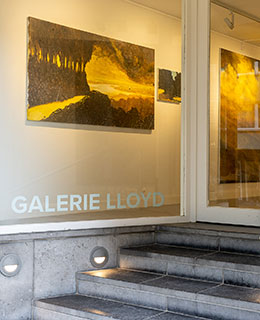No products in the cart.

Piet Peere
Exhibition
Friday 10/03/2023 — Saturday 08/03/2023
It has been another long harsh winter after three years of constant crisis in which both the whole humanity and each of us felt many times on the edge, our deepest resources having been called to help us withstand what, in the great scheme of History, is just another tensed moment like thousands of others in the past and in the future.
But the promise of spring is there; life always regenerates with an unstoppable force despite all hardship, filling us with hope, with love and with passion.
Passion and love are the central forces of the exhibition we propose, a selection from Piet Peere’s impressive oeuvre that comprises painting, graphics and sculpture.
Piet Peere works as a force of nature, as the implacable spring that is rolling over the fading winter.
An excellent draughtsman with a line of a precision that rivals that of a surgeon’s scalpel, as his drawings in the ’80s and ’90s prove, Piet unleashed the Form after the turn of the new millennium — with the forces of the Earth, the Waters and the Sky combined. His restless spirit deforms the shape of reality in order to create a new transfigured one, an inner world that looks the outer world in the eyes with a complete lack of compromises. His demeanor is of a heart-melting gentleness, yet his lively eyes offer a glimpse into his constant searching soul. Piet is definitely a sort of puer-senex — the old child archetype where the fresh, genuine and inquisiting spirit of a child coexists with the wisdom and the lucid vision of an old man.
In his series inspired by the Greek mythology, Piet shows himself indifferent to the classical Apollonian Hellada. In fact the Greek pantheon was everything but Apollonian. Apart from being endowed with immortality and supernatural powers, the Greek gods are a mirror of a deeply flawed humanity, being subject to intense passions, weaknesses, fury, revenge, jealousy. And yet they remain divine.
Piet’s gods, satyrs, heroes seem deformed by an inner storm, and his ability of conveying this Dionysian pantheon is definitely the power of a demiurge.
“In my work you can read how you are doing” says Piet.
And this is because his work is coincidentia oppositorum, the unity of opposites, bringing together the whole array of concepts, feelings and emotions that form the very fundament of existence. Thus it is almost impossible not to find ourselves reflected in the vastness of his oeuvre.
From a narrative point o view, the story of Ares and Aphrodite is that of an adulterous couple: they had an affair of which Aphrodite’s husband, Hephaestus — the god of blacksmiths, fire and volcanoes — found out. He crafted a golden net so fine as to be invisible, and while the two lovers lay together in bed, Hephaestus ensnared them and dragged them to Mount Olympus to shame them in front of the other gods.
What follows is a very human post-divorce scandal that involves Aphrodite being returned to her father Zeus, Zeus not wanting to give back the bride price Hephaestus had paid for his wife and Poseidon intervening as any good old uncle would do.
But the earthly aspect of the story is only one level of interpretation.
From a symbolic point of view, the legend of Ares and Aphrodite is that of an unbridled passion that defies conventions, it is the irresistible attraction of the two forces that have been driven the world since its beginning — Eros and Thanatos, love and death, love and war.
In Piet’s paintings, Ares and Aphrodite are depicted alone in moments of tenderness or of intense lust; sometimes, menacing, the golden net that will catch them lies around.
Who are we, looking at them? Are we accomplices? Are we the cheated husband preparing his revenge? Are we judging them or are we seduced by their lustful desire?
Once again, we will see ourselves in Piet’s compositions, we will have to confront exactly who we are.
And this is the mark of a great Master.
Daniela Chirion, curator, 2023

